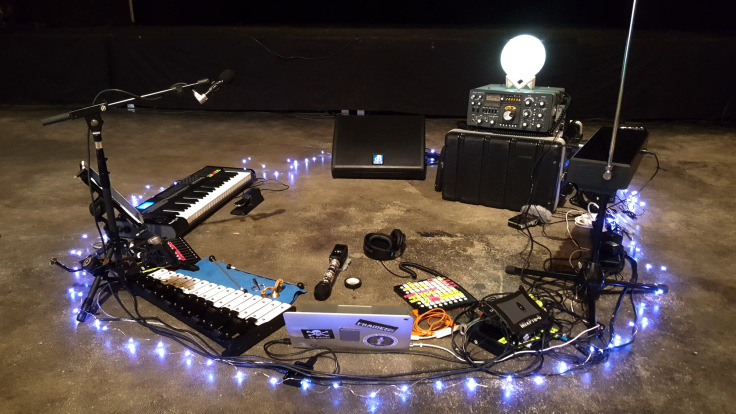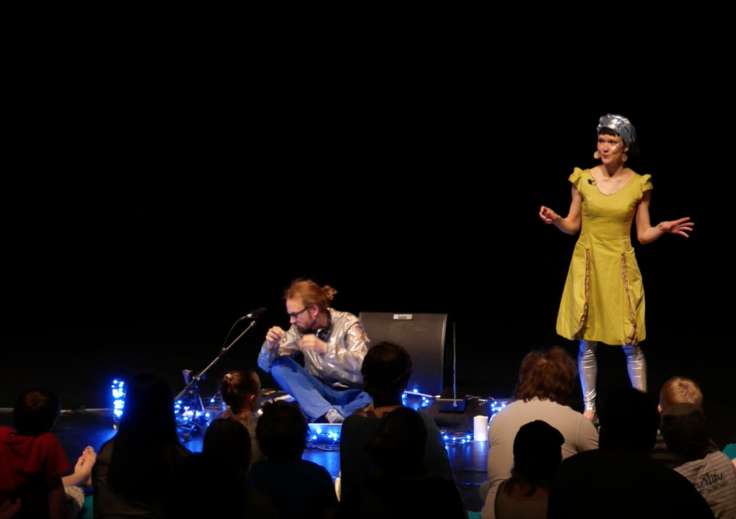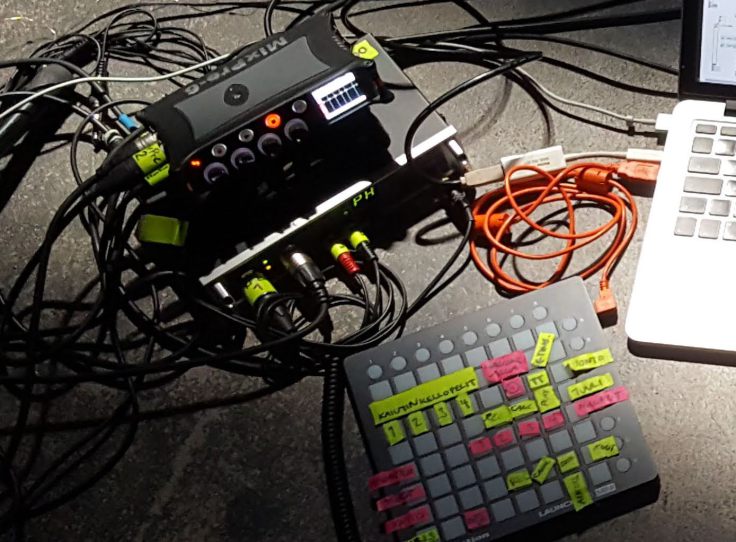Toivoisin että asuisin kuussa ("I wish I would live on the Moon") is a poetry performance with live electronic music and surround sound design with audience participation.
The poems, performed by Kaisa Osola, are by a Finnish children's author Marjatta Kurenniemi (1918−2004). The music and sounds, created and performed by me, salute Marjatta's son Erkki Kurenniemi (1941−2017), one of the pioneers of electronic music in Finland. Lighting design is made by Ina Niemelä.
The show premiered on 13th May 2018 at a children's literary art festival Lumotut sanat in Oulu, Finland. It has since been performed at Our Festival (Meidän festivaali) in Järvenpää/Tuusula in July, Vernissa cultural centre in Vantaa in October, and Lumo cultural centre in Vantaa in November 2018.
Toivoisin että asuisin kuussa is a part of the 100th anniversary celebrations of Marjatta Kurenniemi. The celebrations are coordinated by Vattumadon talo association, who are also behind the initial idea of the performance. A big thanks to them, and also to the Finnish Cultural Foundation who have supported the project with a grant.

The performance is built around twelve poems. I've created the music by live looping a couple of software synthesizers, a glockenspiel and some simple beatboxing. Theremin is also used for both musical melodies and effects. To give some "space" feeling I use a small ham radio transceiver to send morse code (translated from one of Erkki Kurenniemi's transcripted voice diaries) with very low power to another radio. I tune the signal with the VFO and mix the nicely modulated beeps with the music.
Further to loosely connect the soundscape to Erkki's works in the 60's and 70's I have tried to implement some (retro) computer music flavours. However, I don't even try to go “experimental” or too weird in order to to keep the performance's dramaturgy and mood focused on Marjatta's poems and the themes we have chosen to emphasise.
From the sound design perspective the leading ideas are
- to use surround sound to immerse the audience inside the performance universe
- not to hide the creation process and technology behind music and sounds, but instead let them be in a dialogue with the poems
- to encourage the audience to participate in creation of some of the soundscapes: collecting words and sounds from the spectators using a wireless microphone (e.g. a single blow), and creating surround soundscapes from those samples (e.g. huge wind circling around the audience)
The performance is designed for a quadrophonic surround system, but can be converted to other speaker layouts, too. It seems that not many venues have fixed rear or side speakers, so temporary setups must be used. Luckily in Oulu for our premier the Valvesali black box did have a brand new d&b audiotechnik PA with extra speakers in each corner of the space. On the other hand in e.g. Lumo, Vantaa, we managed to create a very balanced surround with four portable, active full-range speakers.

I have built a rather complex Pure Data patch for all the sound design elements, and for the surround outputs I use both discrete speaker channels and Ambisonic encoding (using HOA Library by CICM with 4th order, 2D encoding) depending on situation. There are a number of different trigger-enabled, automated or randomised file players and panners for playing back content. Some audio files are pre-recorded effects and some are recorded live during the performance. I'm using several ways of sampling and manipulating audio from two separate handheld microphones and a lavalier carried by Kaisa.
Pure Data is controlled mainly by midi messages from a MIDI trigger pad.

The music elements run on Ableton Live. It is controlled by an Akai MIDImix controller and an M-Audio Axiom midi keyboard. I'm not very experienced with Live and I have to say that I was surprised how limited it was in terms of configurating custom stuff. For example whenever I pressed one of the MIDImix's record enable / solo buttons I wanted the same channel to be selected in Live. For that I needed to make new MIDI assignments in Live, but that disabled the LED lights in MIDImix. As it was essential for me to get the LEDs working and providing feedback of what I was doing I had to create a subpatch in Pure Data to read which buttons I have pressed and then send messages back to MIDImix to switch on or off the LED's. It worked, but was not a very sophisticated solution!
So far the audiences have been excellent and very co-operative to take part in creating the soundscapes with us. Also, surround sound is something special that people don't get to experience too often in live performances, so it might add a level of magic and immersion to the experience.
Photos: Matti Kurkela and author